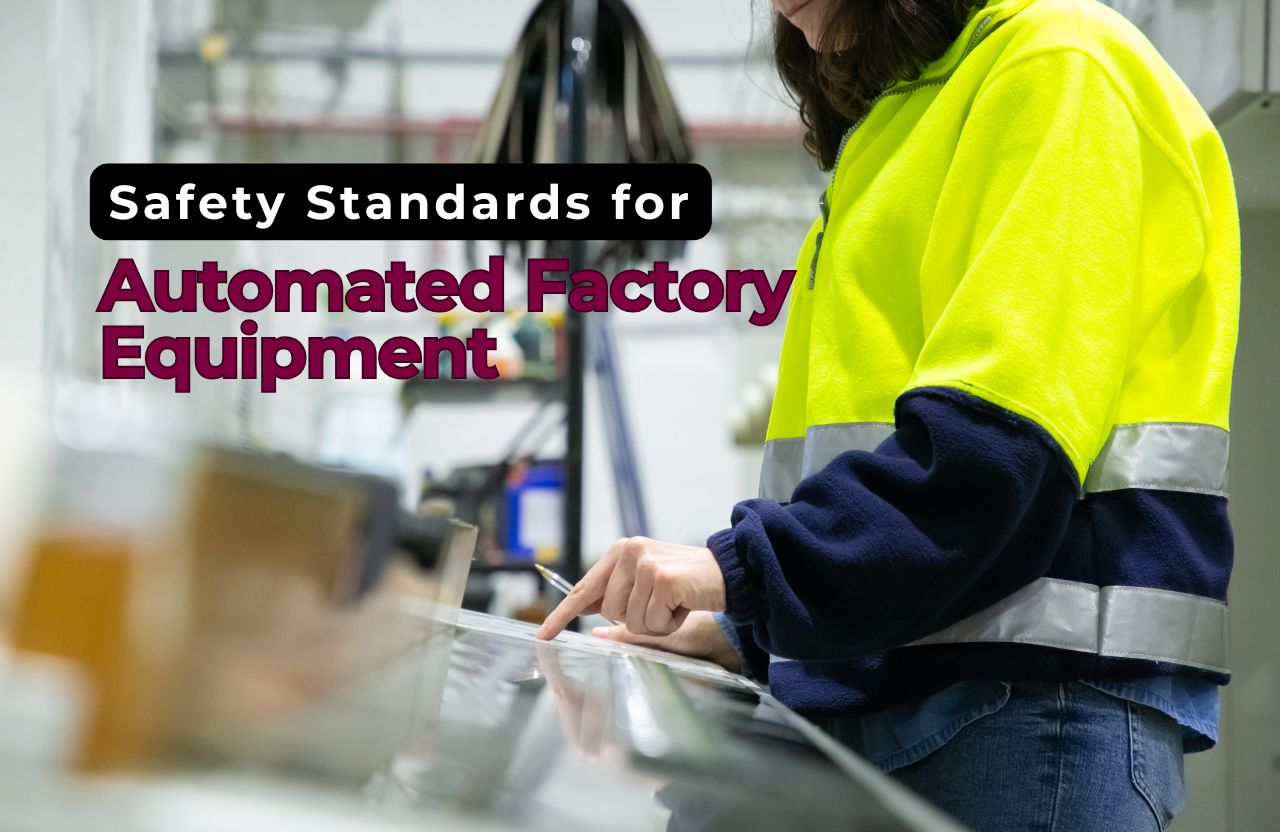As robots take over the shop floor in modern manufacturing, safety standards for Automated Factory Equipment are more important than ever. Cobots, robots, conveyor belts, and CNC machines are all examples of automated factory equipment that need to follow safety standards. Following the safety standards is a responsible thing to do to protect workers, increase the lifetime of equipment and meet legislation.
Why Are Safety Standards Important in Automated Factories?
Automation improves efficiency but creates risks when safety is inadequate. Standards like ISO 13849 and ISO 10218 outline how performance control systems and emergency steps can ensure safe factory operations. Conducting a good risk assessment for automated machinery uncovers dangers and helps decide how to handle them.
Using a robotic arm or an AI-run conveyor helps reduce mistakes, stop accidents with machines, and keep things running. Following safety standards plays a big role in making this happen.
Key Standards to Understand: ISO 13849-1:2023 and ISO 13849-2.
The updated ISO 13849-1:2023 provides simpler ways to calculate performance levels. It offers some room to make assumptions when figuring out PL, which makes it easier to use. However, using it without care can add risks. ISO 13849-2 backs this by giving instructions to validate that safety functions work as needed.
These two standards create an important base to keep automated factory equipment safe. They focus on control systems and safety-related parts.
ISO 10218-1:2025 & ISO 10218-2:2025
The new version of ISO 10218 gives thorough advice on keeping robots safe, covering:
- Safety systems for collaborative robots or cobots.
- How to handle cybersecurity risks in networked machines.
- Rules to keep humans safe when working with robot parts and manual tasks.
This moves Safety Standards for Automated Factory Equipment forward to deal with today’s issues like hacking threats, AI advances and working with robots.
Other Important Standards
- IEC 62061: involves safety in programmable electrical systems.
- ANSI/ASSP Z244.1-2024: updates lockout/tagout requirements could include remote energy control systems.
- CE Marking and EU Directives: necessity for machines in the European Union to be compliant.
- ISO 10218-2025 may incorporate new cybersecurity requirements and updates on collaborative safety provisions.
- ISO 13849-1:2023 provides additional flexibility in estimating risks while considering different scenarios.
- ANSI Z244.1-2024 acknowledges advancements in energy control tools and methods.
- India’s BIS Omnibus Technical Regulation 2024 requires machinery to get certified by August 28, 2025.
These updates shape the way manufacturers follow Safety Standards for Automated Factory Equipment during actual use in factories.
Steps to Follow These Rules in Your Factory
Evaluating Risks and Following the Rules
Start by using ISO 12100 to spot hazards. To figure out the required PL, apply ISO 13849-1/2 guidelines. Although the new “alternative method” might seem simpler, double-check if it meets the needed safety standards. Aligning with Safety Standards for Automated Factory Equipment helps reduce operational risks. At the same time, it supports compliance and boosts efficiency.
ISO 10218 Guidelines To Follow for Robotic Cells
Factories running industrial or collaborative robots need to focus on:
- Setting up safe zones for cobots.
- Building functional safety into systems.
- Securing end-effectors on robots.
- Creating cybersecurity protections.
ISO 10218:2025 not only promotes productivity but also ensures safety.
Matching Global and Local Regulations
If one is working in North America, Europe or Asia, compliance to Safety Standards for Automated Factory Equipment, like ISO, ANSI and BIS would enable worldwide operation. Furthermore, country specific codes such as India’s BIS OTR 2024 adds even more responsibility.
Training and Certification
Certification and training programs teach teams to understand and use these rules . Similar to ISA, there are organizations which offer certifications which have real-world applications about how to utilize and administer Safety Standards for Automated Factory Equipment.
Frequently Asked Questions (FAQs)
1. What are the primary safety compliance requirements for automation?
There are several well-established standards that address safety in automation; for example, ISO 13849, ISO 10218, IEC 62061 and ANSI/ASSP Z244.1. These standards have been written to provide safety in machinery, a robust control system provide information on safety interactions between people and machinery.
2. How do we regulate cobots for safety?
Cobots have regulatory standard ISO 10218 and here is also ISO/TS 15066. They set your limitations on distance, force and speed working with people.
3. Differentiate ISO 13849 vs. IEC 62061?
ISO 13849 applies to all control systems; IEC 62061 applies to electrical and software systems. The choice comes down to what type of equipment you have.
4. Is BIS certification mandatory in India?
India will mandate BIS certification for over 400 types of machinery, under the OTR 2024 rules starting August 28, 2025.
5. When should risk assessments happen?
Do risk assessments before setting up equipment, after big updates once a year or following accidents to stay safe and within guidelines.
Conclusion: Take the Next Step Towards Safer Automation
The message is clear: it is not an option anymore to keep current with Safety Standards for Automated Factory Equipment factory safety is dependent on it. With increasing automation and changing regulations, every decision you make affects compliance and individual’s lives.
What’s your plan now?
- Bring your systems in line with the ISO 10218:2025 requirements?
- Double-check your PL calculations using ISO 13849-1:2023?
- Get ready to meet local rules like India’s BIS OTR 2024?
Let’s Chat About It:
- What’s the toughest roadblock you’re hitting when it comes to following Safety Standards for Automated Factory Equipment?
- Is it cobot compliance, cybersecurity worries or figuring out risk assessments?
- Share your situation and we’ll help identify the best standard or solution.













